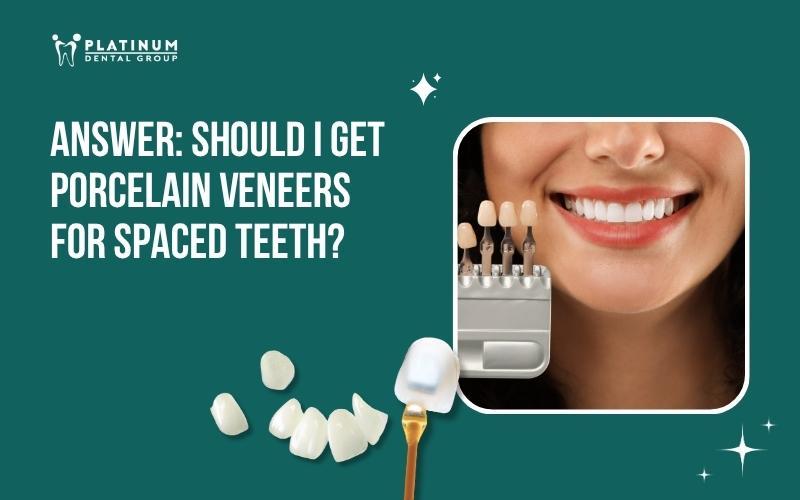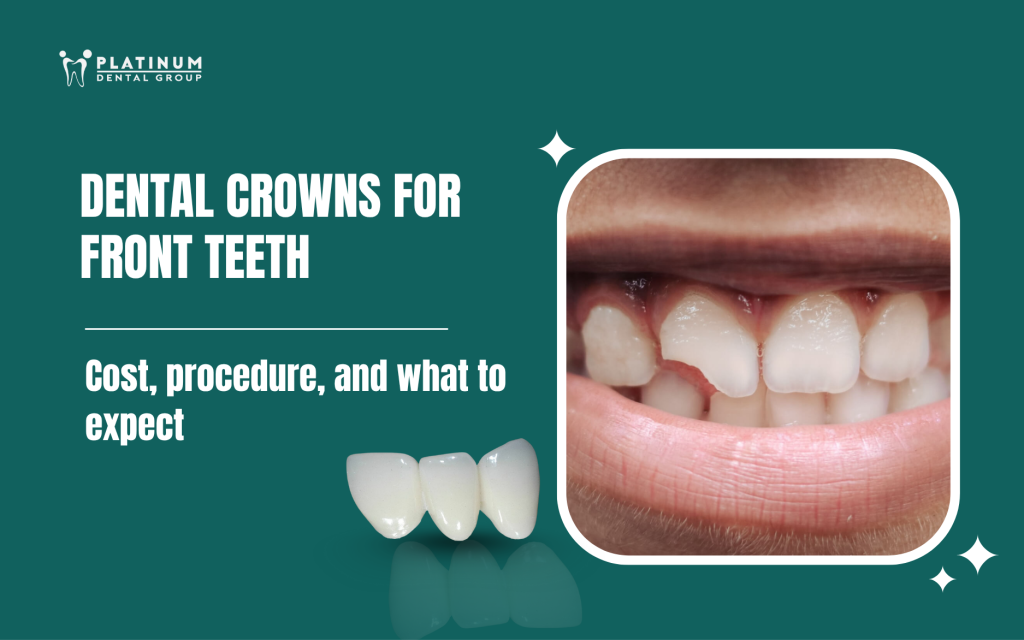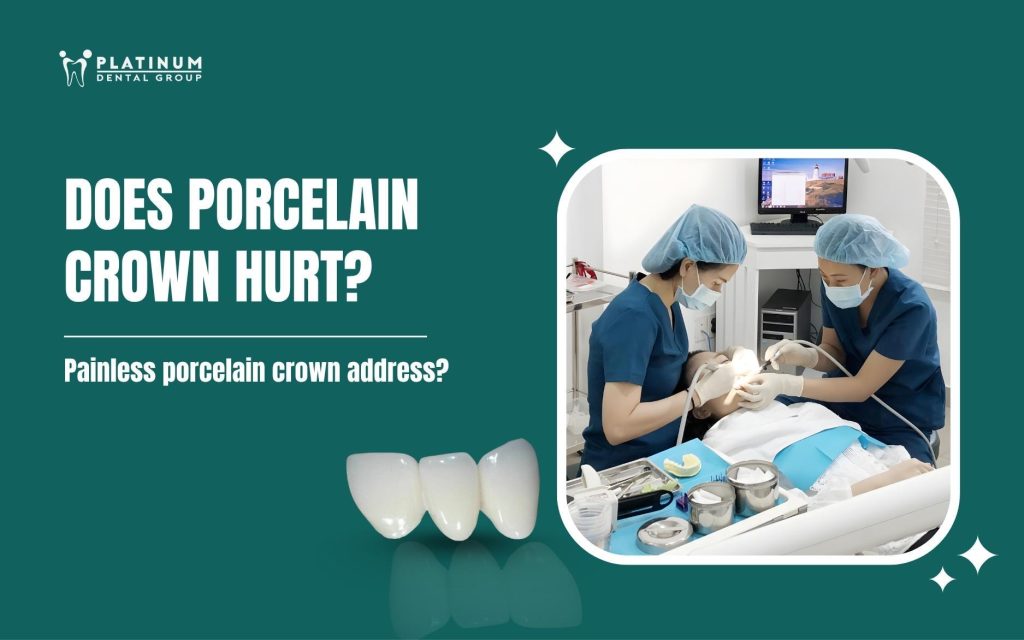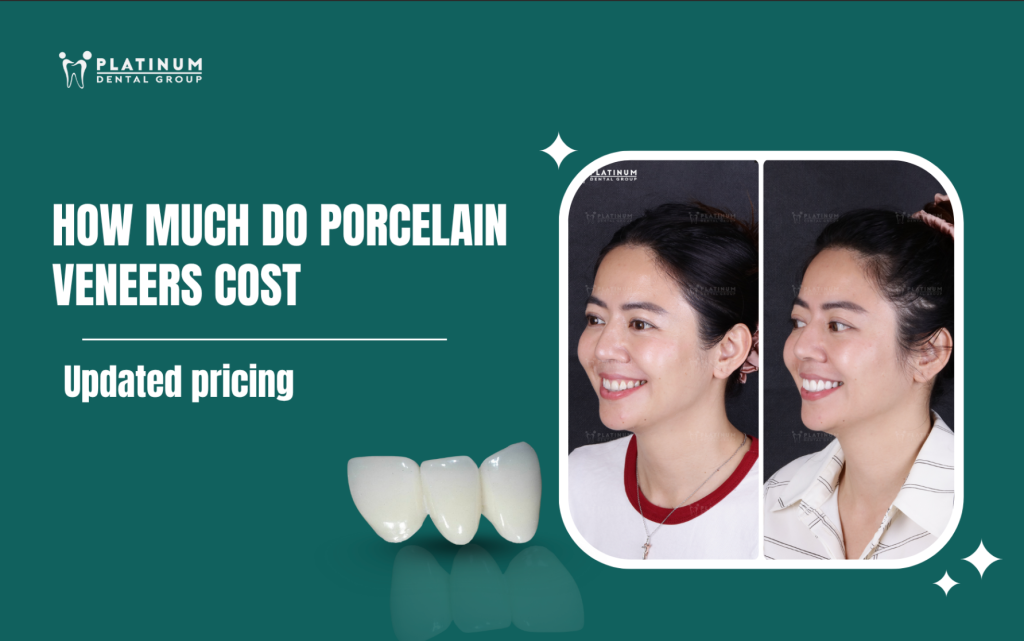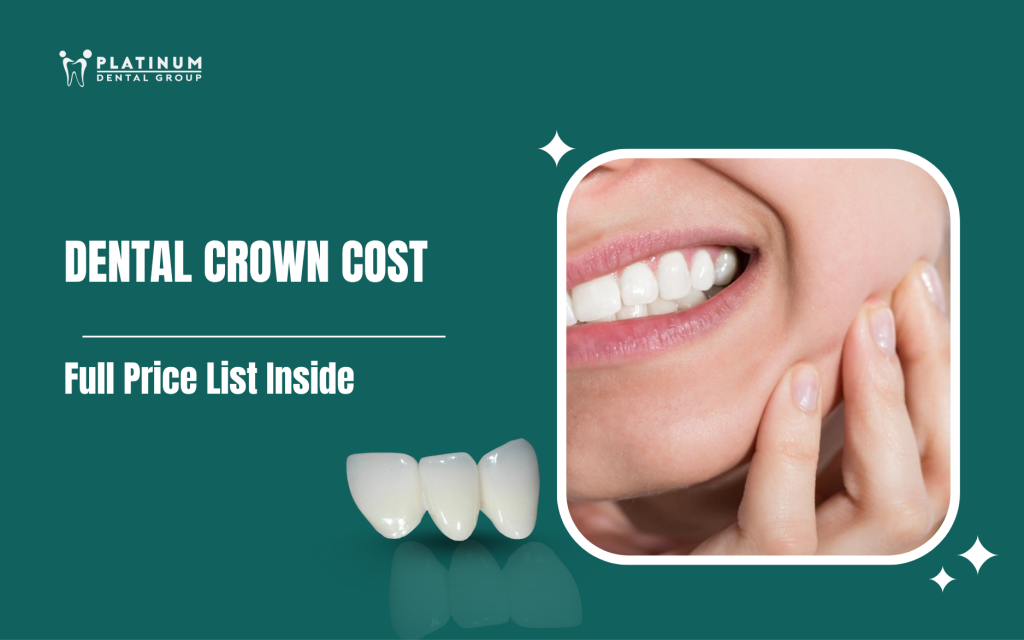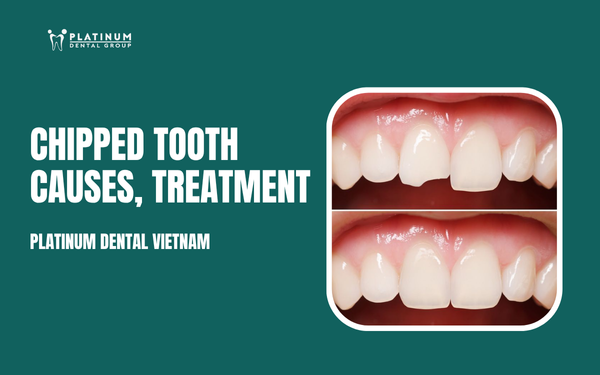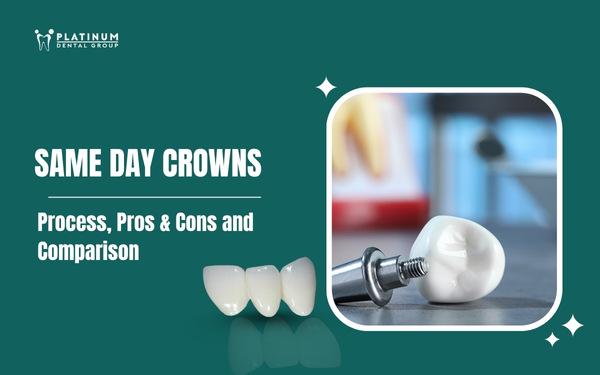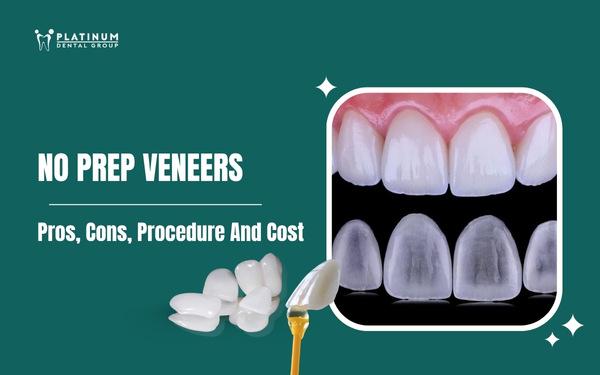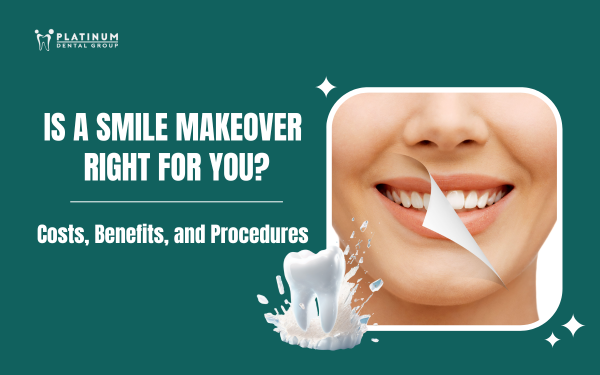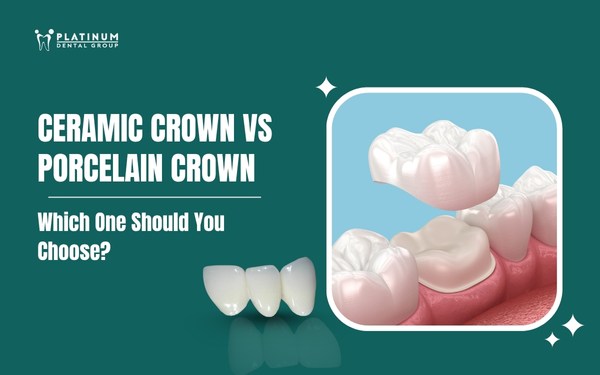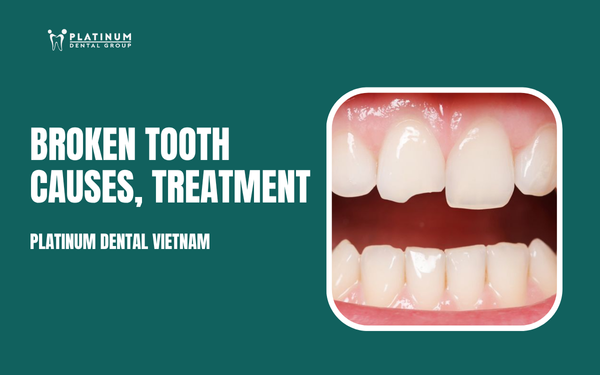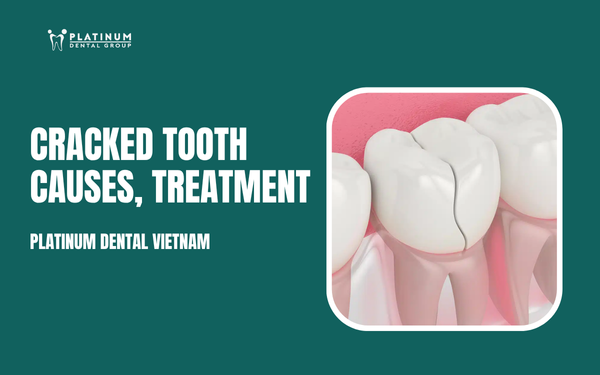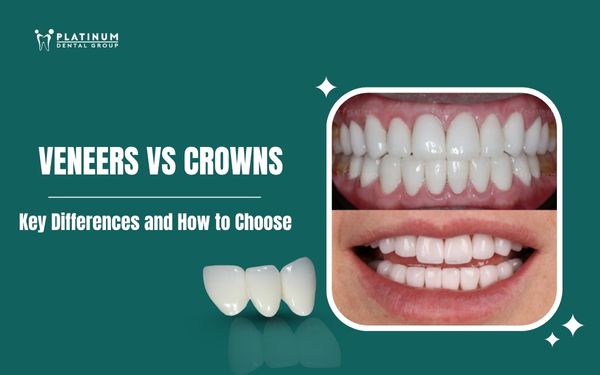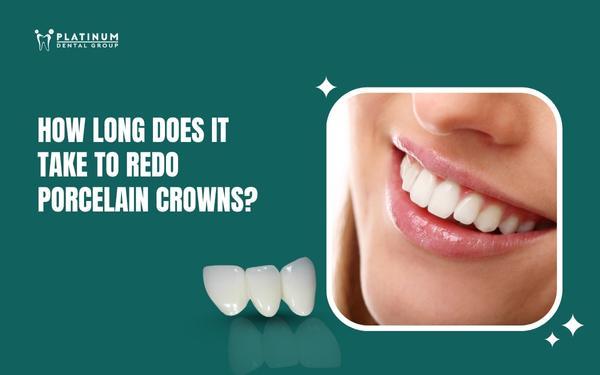Answered: What is a dental bridge? Should you get one?
A dental bridge is a method for restoring a lost tooth by anchoring a set of connected crowns to the two natural teeth on either side of the gap. These supporting teeth are known as abutments. This solution is chosen by many because it both restores chewing function and improves the appearance of their smile. However, is a dental bridge the right choice? In which cases is this method suitable, and what should you be aware of to ensure its long-term success and durability? Let’s explore what a dental bridge is in detail with Platinum Dental Group in the article below to help you make the right decision for your oral health.
Nội dung bài viết
- 1 What is a dental bridge?
- 2 Common Types of Dental Bridges
- 3 Is a dental bridge a good option? Should you get one?
- 4 When you should get a dental bridge
- 5 Who should not get a dental bridge?
- 6 The dental bridge procedure at Platinum Dental Group
- 7 Aftercare for a Dental Bridge
- 8 Platinum Dental Group – A Trusted Destination for Restoring Missing Teeth
- 9 Frequently Asked Questions
What is a dental bridge?
A dental bridge is a fixed dental restoration method used when you are missing one or more adjacent teeth. The structure of a dental bridge includes:
- Pontic (the false tooth): This replaces the missing tooth and is usually made from porcelain or a combination of metal and porcelain to ensure both aesthetics and durability.
- Abutment teeth: These are the natural teeth on either side of the gap, which are carefully reshaped to support the dental bridge.

In simple terms, a dental bridge acts like a “bridge,” connecting the natural teeth on either side to cover the gap left by a missing tooth, helping you restore chewing function and improve your smile.
Compared to other restorative methods like removable dentures or dental implants, a dental bridge has the distinct advantages of a more affordable cost and a quicker treatment time. This is why many clients choose it when they want to replace a missing tooth in a short period.
You may be interested in: How Much Does a Dental Bridge Cost? The Latest Price List
Common Types of Dental Bridges
Today, dental bridges are classified into several different types, depending on the location of the missing tooth, the condition of the abutment teeth, and the aesthetic needs of each individual. Below are the types of dental bridges most commonly recommended by dentists:
Traditional Dental Bridge
The traditional dental bridge is the most commonly used type today. Its structure consists of one or more pontics (false teeth) in the middle, supported by two crowns placed over the natural teeth on either side of the gap. This method is generally suitable for individuals who are missing one or a few adjacent teeth, provided the abutment teeth on both sides are still strong and healthy.
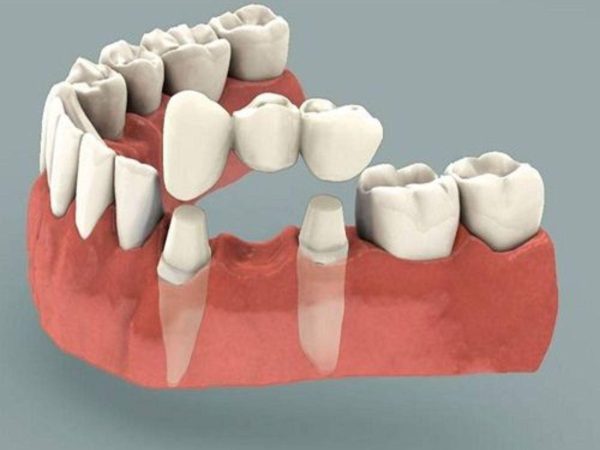
Pros
- Good biting force, ensuring up to 60% of the chewing force of a natural tooth.
- High stability as it is securely fixed onto two abutment teeth.
- Quick restoration time, usually requiring only 2-3 appointments.
- Lower cost compared to individual dental implants for each missing tooth.
Cons
- Requires reshaping healthy, natural teeth to serve as abutments, which can lead to sensitivity and permanently alters the tooth structure.
- The abutment teeth must bear more force, increasing the risk of them weakening over time.
- The average lifespan is 7-10 years, which is shorter than that of a dental implant.
Cantilever Dental Bridge
A cantilever bridge is supported by an abutment tooth on only one side, while the pontic is “cantilevered” over the area of the missing tooth. This type of bridge is typically used only for missing front teeth—an area that does not endure strong chewing forces.

Pros
- Requires less tooth preparation compared to a traditional bridge.
- Preserves more of the natural tooth structure.
- The procedure is relatively quick and simple.
Cons
- Poor load-bearing capacity, making it unsuitable for molars or areas that require strong chewing.
- Can easily lead to uneven chewing forces, which can damage the abutment tooth over time.
- Has a short lifespan, typically lasting only 5-7 years.
Maryland Bridge (Resin-Bonded Bridge)
A Maryland bridge uses one or two small “wings” made of metal or porcelain that are bonded to the back of the adjacent teeth to support the pontic. This method is often used for restoring front teeth, where aesthetics are important but chewing forces are minimal.
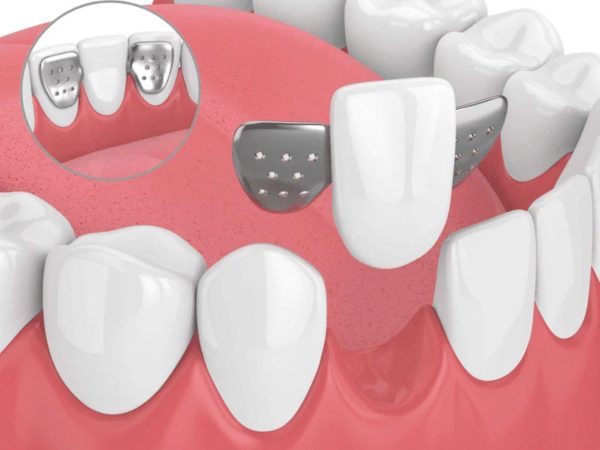
Pros
- Minimally invasive and preserves the most natural tooth structure by minimizing the need for tooth preparation.
- Meets high aesthetic demands due to its compact and discreet design.
- The procedure is quick, minimally invasive, and causes little to no sensitivity.
Cons
- Less durable; the bonding can weaken over time, causing the bridge to become loose or detach.
- Unsuitable for the molar region, which requires significant chewing force.
- The average lifespan is only about 5 years and requires periodic replacement.
See also: What is an Implant-Supported Porcelain Restoration? What is the Procedure?
Implant-Supported Bridge
An implant-supported bridge is a combination of dental implants and a dental bridge. Instead of using natural teeth as abutments, the dentist places implant posts into the jawbone, which then support the bridge. This method is suitable for people who are missing several adjacent teeth or a full arch and want a durable, long-term restoration.
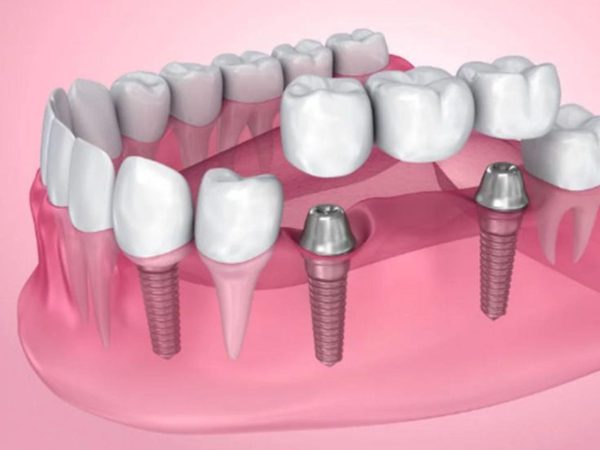
Pros
- Does not require preparing natural teeth, thus preserving them.
- Restores chewing function to nearly that of natural teeth with high stability.
- Prevents jawbone loss—a benefit that traditional bridges cannot offer.
- Has a long lifespan, potentially lasting over 20 years with proper care.
Cons
- Higher cost compared to conventional dental bridges.
- The procedure requires patience and must be performed by a dentist with expertise and experience in dental implantation (as it involves implant placement and waiting for bone integration).
- The patient must be in good overall health with adequate jawbone density, and medical indicators (blood pressure, diabetes, cardiovascular conditions, etc.) must be under control before the implant procedure can begin.
Is a dental bridge a good option? Should you get one?
A dental bridge is one of the most popular solutions for restoring missing teeth, chosen by many clients for its convenience, aesthetics, and reasonable cost. However, like any other method, dental bridges have both advantages and limitations. The decision to get one depends on your oral health condition, needs, and personal circumstances.
| Pros | Cons |
|
|
Pros
- Restores smile aesthetics: It helps fill the gap left by a missing tooth, providing an even, beautiful, and natural-looking set of teeth, which improves confidence in communication.
- Improves chewing ability: The porcelain crowns are designed to fit snugly and securely, allowing for biting and chewing that is nearly equivalent to that of natural teeth.
- More stable than removable dentures: As a fixed restoration, a dental bridge does not shift in the mouth, creating a comfortable feeling when eating and speaking.
- Reasonable cost: Compared to dental implants, a dental bridge is less expensive, making it suitable for a wider range of clients.
- Quick procedure time: On average, the process can be completed in just 2-3 appointments, allowing clients to get their new teeth quickly.
Cons
- Affects natural teeth: The adjacent abutment teeth must be shaped down, which can cause sensitivity or weaken the teeth over time.
- Does not prevent jawbone loss: Because there is no tooth root substitute, the jawbone in the area of the missing tooth can still gradually resorb.
- Limited lifespan: Typically, a dental bridge lasts for 7-10 years, after which it needs to be checked and replaced to maintain function and aesthetics.
- Increased risk of decay and gum disease: Without meticulous care, the abutment teeth are more susceptible to decay and gum inflammation at the bridge margins, which can lead to premature failure.
See also: TOP 4 Disadvantages of Dental Bridges and How to Overcome Them
When you should get a dental bridge
Not everyone with a missing tooth needs a dental implant. In many cases, a dental bridge is the optimal solution due to its simplicity, reasonable cost, and quick restoration time. Below are typical situations where a dentist might recommend a dental bridge:
Missing one or more adjacent teeth
If you are missing one tooth or several teeth next to each other, a dental bridge can “bridge” the gap to fill the space. Early restoration not only helps you chew normally but also prevents adjacent teeth from tilting, causing bite misalignment, or affecting your facial structure.
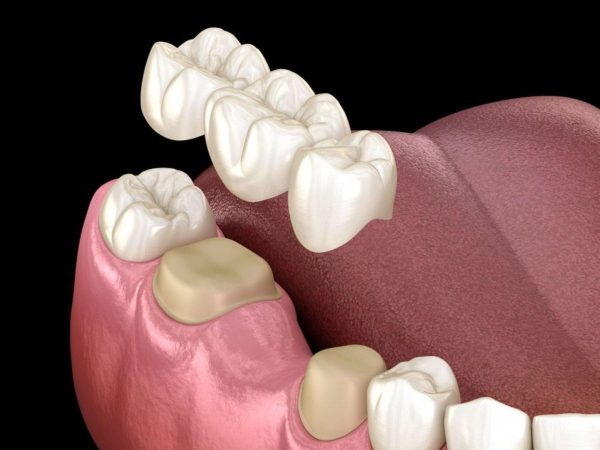
Severely damaged teeth that cannot be restored with a filling or single crown
Some teeth have large cavities, are significantly chipped or broken, or are too damaged to be saved with a filling or a single crown. In such cases, the dentist will recommend extraction and replacement with a dental bridge to ensure both chewing function and overall dental aesthetics.
See also: Are Porcelain Crowns good? Should you get them?
The gap is bordered by healthy natural teeth on both sides
An important condition for getting a dental bridge is having strong, healthy teeth on both sides of the gap to serve as abutments. These teeth will be prepared to support the bridge, ensuring a durable restoration. If the abutment teeth are weak or have underlying issues, this method is not recommended.
Patients who are not eligible for dental implants
Not all cases are suitable for immediate dental implantation. For patients with excessive jawbone loss where the bone volume is insufficient to place an implant, dentists often recommend a bone graft or sinus lift before implantation. However, if bone loss is severe and cannot be regenerated, the patient may not be eligible.
Furthermore, certain systemic diseases such as uncontrolled diabetes, high blood pressure, severe cardiovascular conditions, immunodeficiency, or treatment with bone metabolism inhibitors (like bisphosphonates) can increase surgical risks. In these situations, implantation must be carefully considered or may be contraindicated. For patients with chronic but well-managed conditions, implants may still be possible after a thorough evaluation by a doctor.
In cases where an implant is not feasible, a dental bridge can be an alternative, helping to restore chewing ability quickly and at a lower cost. However, this method has the disadvantage of requiring the preparation of healthy adjacent teeth and does not prevent jawbone loss like an implant does.

Need for a quick and cost-effective restoration
A dental bridge is suitable for those who want new teeth quickly without undergoing a lengthy implant process that can take several months. It is also a more economical choice than an implant while still ensuring basic aesthetics and function.
Who should not get a dental bridge?
While a dental bridge offers good aesthetic and restorative results, it is not suitable for everyone. In some situations, proceeding with the treatment could negatively impact oral health or reduce the lifespan of the bridge. The following individuals are advised against or should carefully consider getting a dental bridge:
People with weak abutment teeth or severe oral diseases
The abutment teeth support the entire bridge. If these teeth have large cavities, are loose, or suffer from pulpitis or periodontitis, the bridge will not be stable and is likely to fail prematurely. In such cases, the dentist will usually recommend treating the underlying condition first or considering an implant instead.
People with severe jawbone loss
Jawbone loss makes the abutment teeth insufficiently stable to support a bridge. This condition also affects facial aesthetics, causing the bridge to fit poorly, leading to gum recession, visible gaps, and an unnatural appearance. People with severe bone loss are often advised to get dental implants instead of a bridge.

People with uncontrolled systemic diseases
Conditions like unstable diabetes, high blood pressure, or severe cardiovascular disease can slow the healing process and increase the risk of complications during the procedure. Clients with systemic diseases should consult their treating physician to determine the safest approach.
People under 18 or whose teeth have not fully developed
In adolescents, the jawbone and teeth are still developing. Placing a bridge too early can lead to misalignment as the jaw structure changes over time, potentially damaging the abutment teeth. Dentists usually recommend waiting until the dental and jaw structures have stabilized.
Patients who clench or grind their teeth (bruxism)
Teeth grinding exerts immense pressure on the abutment teeth and the porcelain bridge, making them prone to cracking or premature failure. For these clients, the dentist may suggest an alternative solution or recommend using a night guard to protect the restoration.
Although a dental bridge can be applied in some cases, it carries significant risks for individuals under 18 or those with a strong teeth-grinding habit. Therefore, Platinum Dental Group advises clients to prioritize dental implants when their health and jawbone are stable. Implants not only preserve natural teeth and limit impact on the jaw structure but also offer a longer-lasting, more aesthetic, and more durable result compared to a bridge.
The dental bridge procedure at Platinum Dental Group
The dental bridge procedure at Platinum Dental Group typically takes about 2-3 appointments, depending on the patient’s oral condition and the number of teeth to be restored. All steps are performed according to dental standards to ensure safety, aesthetics, and long-term durability for our clients.

General Examination and X-rays
In the first step, the dentist will conduct a comprehensive oral examination, combined with X-rays, to check the health of the abutment teeth, gums, and jawbone. This allows the dentist to accurately assess whether the client is a suitable candidate for a dental bridge. If any issues like cavities, gingivitis, or pulpitis are detected, they must be treated completely before proceeding to avoid affecting the bridge’s durability. The client will also be advised on choosing the right type of porcelain to match their aesthetic needs and budget.

Creating the Treatment Plan
After the examination, the dentist will create a detailed treatment plan, including the number of teeth to be restored, the type of bridge to be used, the timeline, and the estimated cost. A clear plan helps the client understand the process and feel more at ease during the subsequent stages.
Anesthesia and Preparing the Abutment Teeth
Next, the dentist will administer local anesthesia to ensure the client feels no pain or discomfort during the tooth preparation process. The natural teeth adjacent to the gap will be shaped down to serve as abutments for the bridge. The amount of tooth reduction is precisely calculated to ensure stability while minimizing the impact on the natural tooth structure. This is a crucial step, as the quality of the abutment teeth determines the lifespan of the entire bridge.

Taking Impressions and Designing the Bridge
After preparing the abutment teeth, the dentist will take an impression of the jaw using specialized materials or modern 3D scanning technology. This information is sent to a dental laboratory to fabricate a dental bridge with the precise size, shape, and color that matches the client’s natural teeth. While waiting for the final bridge (which takes about 2-5 days), the dentist will place a temporary restoration to ensure aesthetics and chewing function.
Fitting and Cementing the Final Bridge
Once the dental bridge is ready, the dentist will temporarily place it on the abutment teeth to check the fit, color, and bite. If any adjustments are needed, the bridge will be modified to achieve the most natural and comfortable result. Finally, the dentist will permanently cement the bridge using specialized dental cement, ensuring it is secure and stable for the long term. At the end of the procedure, the client will receive detailed instructions on oral care and scheduling regular check-ups to maintain the durability and aesthetics of the bridge.

Aftercare for a Dental Bridge
After a dental bridge is placed, clients need a proper care regimen to maintain its durability, prevent oral health problems, and extend its lifespan. Proper hygiene, a balanced diet, and regular check-ups will help the bridge function stably and comfortably, just like natural teeth.
Proper Oral Hygiene
Although a dental bridge is durable, it still needs regular cleaning to prevent plaque and bacteria buildup, which can cause gum inflammation. Clients should brush their teeth at least twice a day with a soft-bristled toothbrush, brushing gently in a vertical motion from the gumline downwards to avoid damaging the abutment teeth. Additionally, it is essential to use dental floss, a water flosser, or an interdental brush to thoroughly clean the area underneath the bridge where food particles can easily get trapped.
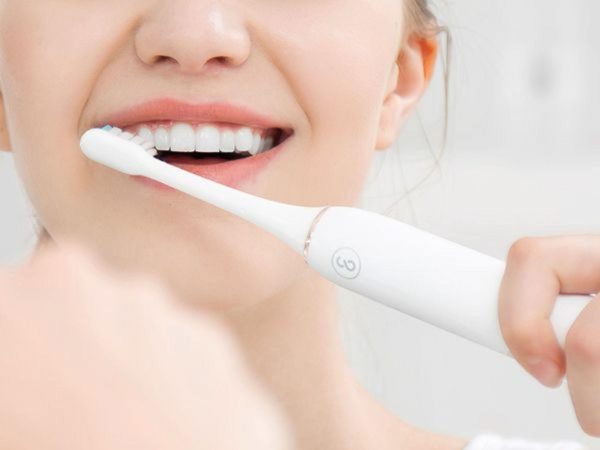
A Balanced Diet
In the first few days after the bridge is placed, it is best to eat soft, easy-to-chew foods to allow the teeth and gums to adjust. In the long term, clients should limit excessively hard foods (like bones or hard nuts), overly chewy foods (gummy candies), or sticky foods (caramel) as they can loosen or crack the bridge. Sugary foods and carbonated drinks should also be reduced to avoid the risk of cavities and gum inflammation around the abutment teeth. Furthermore, increase your intake of green vegetables, fruits, and calcium-rich foods to keep your teeth and gums healthy.
Regular Dental Check-ups
A dental bridge needs to be monitored periodically to ensure it remains stable. Clients should maintain a habit of visiting the dentist every 6 months for the dentist to check the bridge’s fit, the health of the abutment teeth, and the condition of the gums. If any unusual signs are detected, such as a loose bridge, pain, gum inflammation, or discoloration, you should visit the dentist promptly for timely treatment. Regular check-ups not only help extend the life of the bridge but also protect your overall oral health.
Platinum Dental Group – A Trusted Destination for Restoring Missing Teeth
In the past, dental implants were expensive and the technique was not widely available, so many people chose dental bridges. However, this method has several disadvantages, such as excessive preparation of natural teeth, which weakens the tooth structure and carries a risk of gum inflammation.
Today, with advanced implant technologies, the implantation process is faster, more precise, and much more affordable. At Platinum Dental Group, we do not encourage dental bridges but prioritize implants, which help restore missing teeth securely, preserve surrounding natural teeth, and ensure long-lasting aesthetics.
With a team of highly skilled and experienced doctors and a state-of-the-art technology system, clients can be completely confident in the safety and effectiveness of the tooth restoration treatment at Platinum Dental Group.
Our dental clinic is conveniently located in the center of District 1 (127 Nguyen Cu Trinh, Cau Ong Lanh Ward) and District 2 (An Khanh Ward), Ho Chi Minh City, making it accessible for both local clients and those combining travel with dental treatment. With a team of experienced and highly specialized doctors, Platinum Dental Group is proud to offer porcelain restorations that are not only durable but also achieve optimal aesthetics, giving clients a natural and comfortable smile.

The doctors at Platinum Dental Group are not only technically proficient but also possess a deft touch and an artistic sense of aesthetics, ensuring every smile is perfect after restoration. Notably, our team of doctors can communicate fluently in multiple languages, including English and French, catering to the needs of our international clients, who make up about 30% of our clientele from the US, UK, Taiwan, South Korea, and many other countries.
Platinum Dental Group also stands out for its reasonable costs and flexible treatment plans, suitable for travel schedules. The cost of dental treatment in Vietnam is typically 50-75% lower than in developed countries like Australia, the US, Canada, New Zealand, or Singapore, offering high-quality restoration solutions at an affordable price.
Our distinguished team of doctors at Platinum Dental Group includes:
- Dr. Tran Lan Anh – Expert in Aesthetic Restorations, Top 1 Veneer Specialist in Vietnam.
- Dr. Duong Minh Tung – Expert in Dental Implantation and Maxillofacial Surgery.
- Dr. Phung Le Phuong Dung – Graduated with Honors, Specialist Level 1 in Odonto-Stomatology.
- Dr. Bui Quoc Duy – Strong expertise, graduate of Odonto-Stomatology.
- Dr. Dang My Hang – Nearly 13 years of clinical experience, officially licensed.
- Dr. Dang Duy Phuong – Licensed by the Ministry of Health as a specialist in Odonto-Stomatology since 2012.

In addition to our doctors’ expertise, Platinum Dental Group is equipped with a state-of-the-art machinery system, including:
- PaX-i3D SMART CT Cone Beam 3D machine (USA) for panoramic, cephalometric, and 3D imaging to support implants, orthodontics, restorations, and endodontics.
- Implant placement machine with precise torque control, making the implant process safe, minimally invasive, and stable from the start.
- T-Scan machine for bite analysis, ensuring a perfect bite after treatment.
- iTero 5 & 3Shape TRIOS Scanners for quick and comfortable impressions, accurately capturing arch characteristics and tooth color to support optimal restoration design.
- Smile Design simulates the smile before treatment, ensuring the desired aesthetic result.
- Cad/Cam machine for fabricating porcelain crowns and veneers in just 2 appointments.
- AirFlow for painless cleaning and tartar removal for sensitive cases.
- European-standard sterilization system ensuring all instruments are completely sterile, preventing cross-contamination.
With the combination of a highly specialized team of doctors, modern equipment, and dedicated care, Platinum Dental Group has become a leading trusted address for domestic and international clients seeking dental restorations, ensuring every smile is beautiful, natural, and long-lasting.
Frequently Asked Questions
How many years does a dental bridge last?
The average lifespan of a dental bridge is typically 5-15 years, depending on the material, the dentist’s skill, and the patient’s care. If high-quality all-porcelain crowns are used and maintained with good hygiene, they can last over 15 years. However, because abutment teeth are prepared and bear significant chewing forces, the adjacent natural teeth are still at risk of weakening over time. Therefore, at Platinum Dental Group, our doctors often encourage clients to consider dental implants for a longer lifespan and maximum preservation of natural teeth.
Is getting a dental bridge painful or swollen?
During the procedure, clients will receive anesthesia, so there is virtually no pain. After the teeth are prepared and the bridge is placed, there might be some mild sensitivity or slight pain for a few days. However, because the procedure involves altering healthy teeth to serve as abutments, some sensitivity can persist and the natural tooth structure is permanently changed. With an implant, clients do not need to have their natural teeth prepared, which minimizes invasiveness and preserves the healthy surrounding teeth.
Is a dental bridge durable?
A dental bridge has relatively good strength and load-bearing capacity, ensuring chewing function and aesthetics initially. But over time, the abutment teeth can weaken, the gums can recede or become inflamed, and bone loss can occur under the gap, leading to the shifting of the remaining teeth. Therefore, a dental bridge should be considered a short-term solution for missing teeth, while an implant remains the more durable and optimal choice.
Where should I get a dental bridge?
If a client still wishes to get a dental bridge, it is crucial to choose a reputable clinic to ensure safety. At Platinum Dental Group, the procedure is performed according to international standards with high-quality materials, guaranteeing aesthetic and functional results. However, our doctors always advise clients to prioritize implants as they are an advanced restorative solution that preserves natural teeth, prevents bone loss, and offers a lifelong solution with proper care.
A dental bridge was once a popular solution for restoring missing teeth due to its convenience and reasonable cost. However, this method has several potential drawbacks, such as the need to prepare natural teeth, which can affect adjacent teeth and does not prevent long-term jawbone loss.
At Platinum Dental Group, we prioritize modern solutions like dental implants, which both preserve natural teeth and optimally restore chewing function and aesthetics. With advanced techniques, reasonable costs, and a medically standardized process, implants have become a safe and sustainable choice for those with missing teeth.
If you are considering the best way to restore a missing tooth, let our specialists guide you. Schedule a detailed consultation with Platinum Dental Group to choose the right solution and experience our professional service. Please find our contact details below.
Platinum Dental Group
Clinic Locations:
📍Platinum Dental Central: 127 Nguyen Cu Trinh Street, Cau Ong Lanh Ward, Ho Chi Minh City
📍Platinum Dental Thao Dien: 1H Street 10, An Khanh Ward, Ho Chi Minh City
📞 Hotline: (+84) 28 3920 9969 | 096 779 7799
✉️ Email: info@platinumdentalvietnam.com
🌐 Website: https://platinumdentalvietnam.com/
💬 Instagram: https://www.instagram.com/platinumdental.vietnam/
🔗 Facebook: https://www.facebook.com/platinumdentalvn



 Tiếng Việt
Tiếng Việt